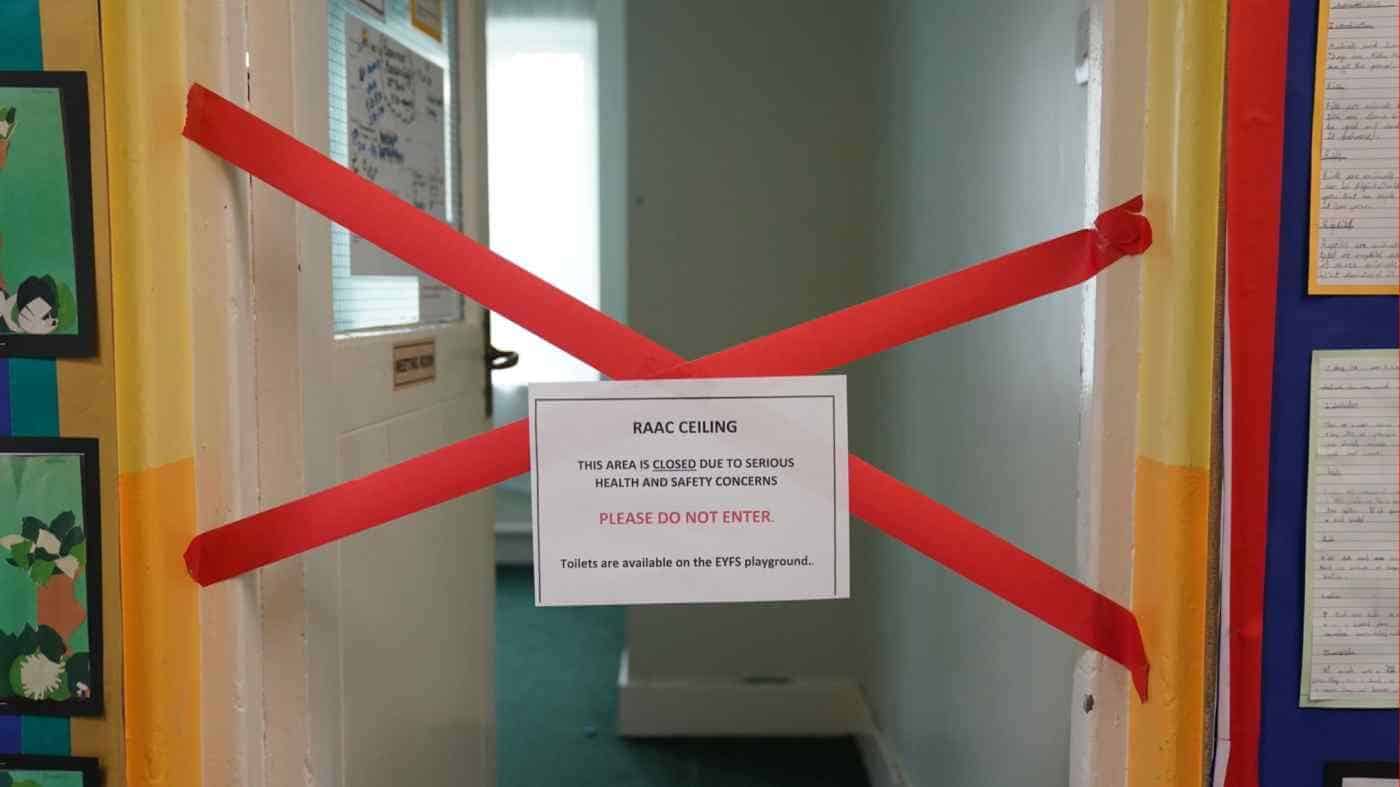Capital outlay has fallen short for a long time punctuated by occasional bursts of spending
The crumbling concrete in UK schools highlights a lack of spending on buildings and maintenance going back decades.
While prime minister Rishi Sunak and a former top civil servant at the Department for Education traded accusations on Monday as the crisis over buildings built with reinforced autoclaved aerated concrete (Raac) grew, the available data shows public capital spending has generally fallen short of what was needed to maintain the estate.
This deficit has existed over many years, punctuated by occasional bursts of spending, such as during the Labour party’s “building schools for the future” project between 2009 and 2011. The programme was cancelled in 2010 by the then Conservative education secretary, Michael Gove.
The lack of spending that has contributed to the neglect in the fabric of educational buildings is, however, complicated by different responsibilities across the UK between central government, devolved administrations, local authorities, academy trusts and schools themselves.
In a June report, the National Audit Office said that despite these complications in England, “the condition of the school estate is declining, and there are safety concerns about some types of buildings”.
The spending watchdog made clear the department for education was responsible for overall financing of schools’ capital expenditure.
“Following years of under-investment, the estate’s overall condition is declining and around 700,000 pupils are learning in a school that the responsible body or DfE believes needs major rebuilding or refurbishment,” the NAO said.
“There is a significant gap between the funding available and that which DfE assesses it needs to achieve its aim for school buildings to be safe and in a good condition for those who learn and work there,” it added.
No one should be surprised about the poor state of school buildings, said Luke Sibieta, a research fellow at the Institute for Fiscal Studies. “Anyone following schools’ capital spending and buildings could have predicted this. The only surprise was that it’s the concrete that is to blame.”
The NAO report suggested that asbestos, electrical wiring, heating and ventilation — rather than Raac — were the biggest structural concerns around school buildings, and were the most expensive areas of necessary outstanding school repairs.
Jonathan Slater, the education department’s former permanent secretary, on Monday accused Sunak of halving an agreed plan to rebuild or refurbish at least 100 schools a year in 2020.
Officials denied there had ever been a plan to rebuild that many schools annually, but it is clear that real capital spending has not been growing fast in recent years.
At the IFS, Sibieta calculated that schools capital spending in England was about 26 per cent lower in the three years to 2023-24 than in the three years up to 2008-09 before the surge of “building schools for the future” money kicked in.
Inflation has also whittled away at Treasury calculations for real terms capital increases. In the 2021 spending review the government planned for the DfE’s real capital expenditure to grow at an annual rate of 2.2 per cent this parliament. After rapid price increases, the reality will be closer to 1.3 per cent.
Moreover, the DfE normally fails to spend its full capital budget. In the latest government statistical document on public expenditure, public sector gross capital procurement on education services across the whole of the UK was broadly flat in cash terms between 2018-19 and 2022-23, indicating the likelihood of a large cut in real resources for school buildings.
Officials on Monday said underspends in capital programmes revealed by these figures suggested there was an ability to fix the Raac concrete crisis without additional departmental money or a need to dip into Treasury reserves.
However, if the bill to fix the concrete proves to be large, other areas of schools capital spending planned in the years ahead will inevitably be postponed or cancelled.
The DfE has been contacted for comment.
Source: Financial Times



